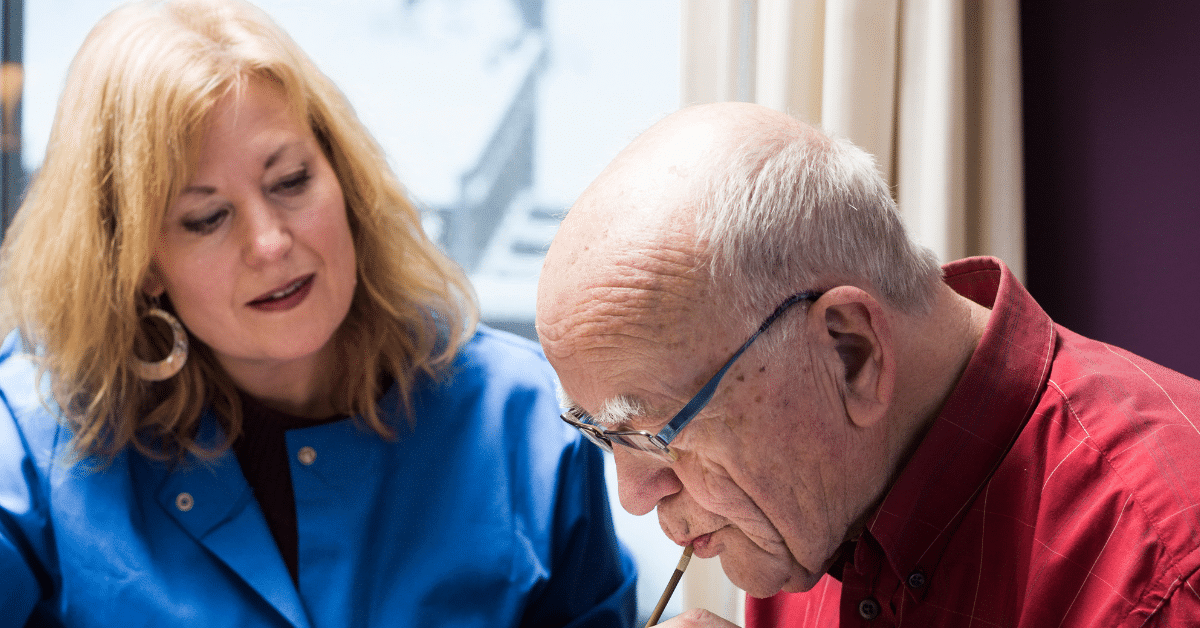
Speech Therapy for Stroke Survivors
Speech therapy for stroke survivors is an important aspect of rehabilitation. After a stroke, many individuals may experience difficulties with speech and language, a condition known as aphasia, or they may have problems with the muscle control needed for speaking, known as dysarthria. Here are key points about speech therapy for stroke survivors:
Assessment
The initial phase in speech therapy for stroke survivors is a comprehensive assessment conducted by a qualified speech-language pathologist (SLP). This crucial evaluation plays a pivotal role in pinpointing the unique speech and language challenges faced by the stroke survivor. The SLP’s assessment encompasses an in-depth analysis of the patient’s speech, language, cognitive-communication, and swallowing abilities, often incorporating both standardized testing and observational techniques. Key factors, such as the patient’s capacity to comprehend and articulate language, along with their oral-motor functionality, are meticulously evaluated.
Personalized Therapy Plan
Following this detailed assessment, the SLP devises a tailor-made therapy plan, targeting the specific needs of the individual. This customized plan is focused on enhancing various aspects such as speech clarity, language proficiency, cognitive-communication skills, and swallowing abilities. The plan’s flexibility allows it to evolve, adapting to the patient’s ongoing progress and shifting needs, under the vigilant supervision of the SLP.
Techniques and Exercises
Speech-language pathologists employ a diverse array of exercises and methods to bolster various communication facets. These can range from articulation drills and vocabulary enhancement activities to cognitive exercises aimed at refining conversational abilities. Real-life scenario-based exercises are often utilized by SLPs to make the therapy sessions more relevant and impactful.
Technology Aids
Modern technology often plays a supportive role in speech therapy. SLPs may integrate specialized software tailored for language exercises or introduce advanced speech-generating devices in more severe cases. Training and guidance in using these technological tools are provided to both the patient and their caregivers, ensuring effective utilization.
Family Involvement
The involvement of family members is a vital component of the therapy process. SLPs actively engage family members, imparting crucial communication strategies and fostering a conducive environment for recovery at home. Educational sessions are often organized for family members to reinforce therapy objectives and to deepen their understanding of the patient’s communication requirements.
Regular Practice
Consistent and regular practice, as recommended by SLPs, is essential for noticeable improvement. Regular therapy sessions are scheduled, and home exercises are provided to reinforce learning. SLPs meticulously monitor progress, making necessary adjustments to the therapy plan to ensure sustained improvement.
Adjusting Therapy Over Time
As the patient makes progress, it’s often necessary to modify the speech therapy plan to align with their evolving needs. The SLPs’ expertise is critical in periodically reevaluating and adjusting the plan, potentially introducing new techniques or reducing the emphasis on certain exercises, to cater to the improving skills of the patient.
Long-term Commitment
The journey to recovery is often lengthy, and the role of the SLP is integral in supporting patients throughout this period. Continuous motivation, progress tracking, and expectation management are part of the SLP’s role, ensuring that they remain a steadfast resource for the stroke survivor and their family.
These steps highlight the comprehensive and adaptive approach taken by speech-language pathologists in facilitating the rehabilitation of stroke survivors, emphasizing the importance of personalized care, innovative techniques, family involvement, and long-term commitment in the journey towards regaining communication abilities. It’s important to note that the success of speech therapy can vary depending on factors such as the severity of the stroke, the area of the brain affected, the individual’s overall health, and the timing of the intervention. Early intervention often leads to better outcomes, but improvements can still be made even with later intervention.
Share This Article
Similar Blogs
What is a Pediatric Occupational Therapy Assistant?
When children face challenges that impede their ability to participate in daily activities, the role of pediatric occupational therapy becomes essential in supporting their growth and development. Within…
Posted: 2 Days Ago
Benefits of Working in a Long-Term Care Facility
Working in a long-term care facility presents unique opportunities and rewards that can be fulfilling both personally and professionally. For many healthcare professionals, the decision to work in…
Posted: 2 Days Ago
Working as a Speech-Language Pathologist (SLP) in School Settings: What to Expect, Pros and Cons
When considering a career in speech-language pathology (SLP), the school setting is one of the most popular avenues for professional practice. Schools across the country rely on SLPs…
Posted: 2 Days Ago


